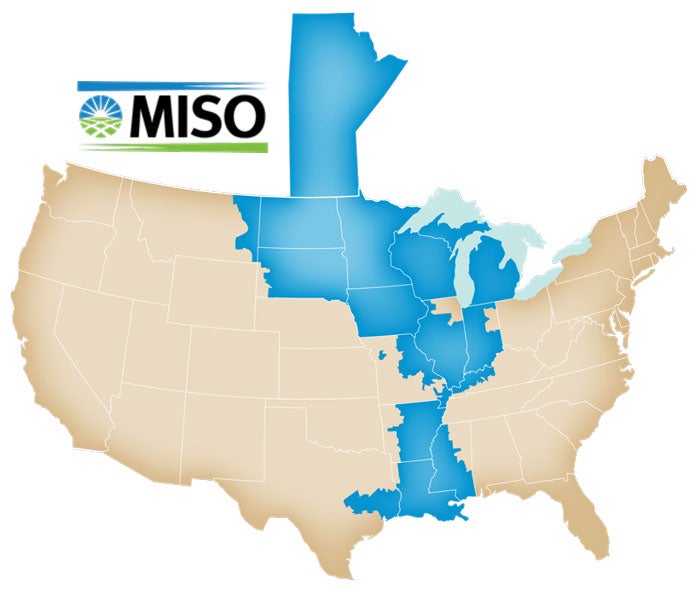Electricity — it is the lifeline of our homes and communities. The ability to provide power is a balancing act. One that is getting harder and harder to maintain for many reasons. It is certainly top of mind for me and, as I am learning, for you. At our annual meeting in June, a member asked about “rolling blackouts” and expressed concern for the future. This really struck me. I am not alone in my worry for the future.
The “balance” that concerns me is with power generation and power use. We live in the MISO, Midcontinent Independent System Operator, service area. MISO ensures we, in all the territories highlighted in blue, have enough electricity at any given time.
On a recent summer day, MISO’s peak load was about 109,000 megawatts (MW). That is a lot of power when you consider that 1 MW can run between 650-1,000 homes. If you take the midpoint (825), 109,000 MW will power almost 90 million homes.
You may wonder, where did we get that power? A lot of places. On that same summer day:
- 8% of the load came from solar and wind
- 5% from hydro
- 9% nuclear
- The remaining 78% from coal and natural gas!
This is where the balancing act comes into play. By 2050, a study from McKinsey & Company predicts U.S. electricity demand to double. This does not worry me as much as the government’s overreach into our industry. The U.S. Environmental Protection Agency has proposed rules that, if enacted, would threaten the nation’s coal and natural gas plants before other “cleaner” solutions can be brought online.
How would we generate enough power? The rules would require most coal and gas power plants to cut or capture nearly all their carbon dioxide emissions or close within 15 years. These rules are impractical, costly and unproven. This is not a statement to undermine the transition to renewable energy. It is a matter of fact. The costs and timelines are unrealistic and threaten our ability to deliver affordable and reliable power.
Our region can barely generate enough electricity to meet peak loads. The disorderly and premature elimination or reduction of our power workhorses — coal and natural gas — is a threat to our families and communities. Imagine people unable to receive medical care, flooding due to loss of pumping stations, heat strokes due to loss of air-conditioning. I could go on and on, but you get my point.
I fear in the next 10 years, this balancing act I am concerned about now will be different. If we continue on the current path, we will be teetering on the edge of the power reliability cliff. EnerStar and Wabash will continue to pursue reliable and affordable power sources and work with our legislatures to enact “sensible” rules for our power sources. We’re watching out for you.
Contributing to this article is Vicki Gardner, VP of Marketing & Communications at Wabash Valley Power Alliance. WVPA is a not-for-profit generation and transmission cooperative which provides EnerStar Electric Cooperative with its wholesale power needs.

